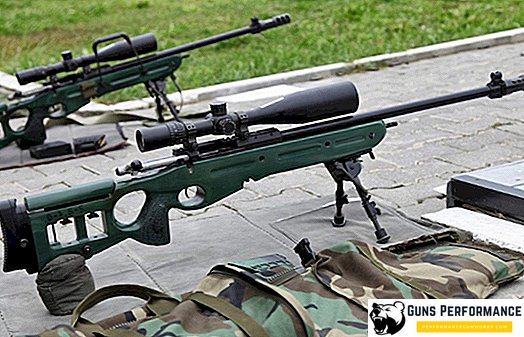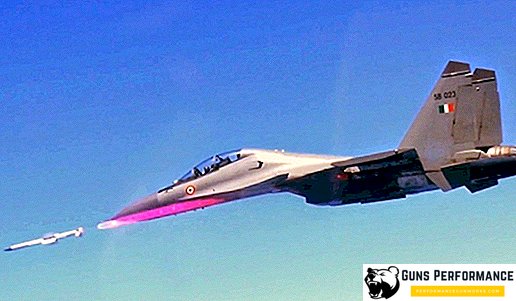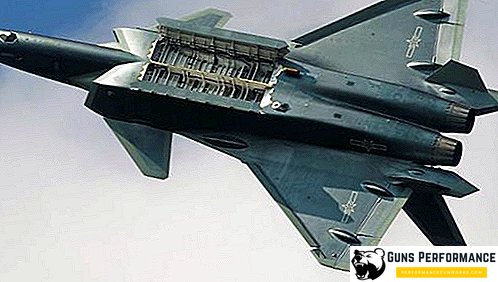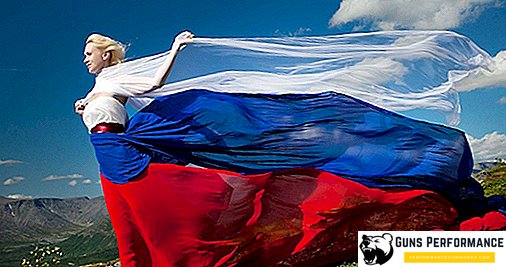By Semenovskiy means the regiment, which was part of the Russian Imperial Army, as well as the regiment re-established in 2012, which is part of the Armed Forces of the Russian Federation.
History reference
The history of the Semenov regiment dates back to the comical troops of Tsar Peter Alekseevich, later titled by Emperor Peter the First and received the name Great. The fact is that from a young age, Peter had a great interest in military affairs, and amusing regiments appeared just for training the king and his peers in military affairs, conducting maneuvers and exercises, and even waging small "wars" using real artillery.
The regiment takes its beginning in a village near Moscow called Semyonovskoe. It was there that in 1691 a detachment of amusing "Semenovtsy" was created (as they were immediately dubbed after the name of the settlement). Within six years, this training regiment was named Semenovskiy, and three years later - the Life Guards Semenovskiy.
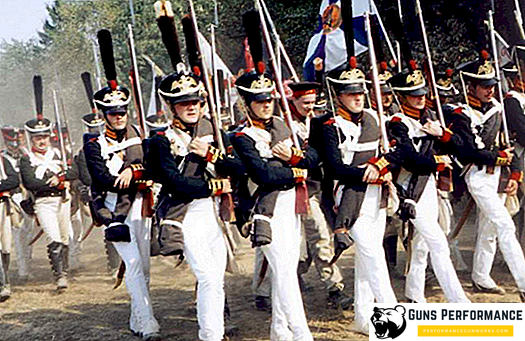
Semenovskiy regiment received baptism of fire in 1695, when Tsar Peter undertook a campaign against the fortress of Azov. Russia's strategic objective was to get access to the Sea of Azov, in order to break through the wall of isolation that had surrounded the Russian kingdom since the middle of the 17th century. The campaign was crowned with the victory of Russian weapons, and the “Semyonovtsy” performed the first feats of arms. By 1700, the regiment was completed, which resulted in the formation of already three infantry battalions. By the way, at that time, the usual regiments had only two battalions of infantry each.
The next war, in which the regiment took part, was not far off. In 1700, Russia, Denmark and Rzeczpospolita launched a single coalition against Sweden, which at that time dominated the Baltic. Already at the very beginning of the war, the Semenov regiment took part in a campaign in Estonia (the territory of modern Estonia) and in the siege of the Narva fortress. At first, it seemed that the Russian army would be able to seize the fortress before the winter cold and retreat to Novgorod for winter apartments. However, the rapid capitulation of Denmark and the landing in Livonia (the territory of modern Latvia) of the Swedish king Charles XII with the army seriously changed the situation.
On November 19 (30), 1700, the Swedes attacked the Russian army and forced to capitulate a significant part of it. Only Semenov and Preobrazhensky regiments staunchly repelled the attacks of the enemy and were not crushed. Thanks to the courage of the soldiers of the Russian Guard, the army avoided a complete defeat, and the Swedes, admiring the courage of the Semenov and Preobrazhentsy, allowed these regiments to withdraw with unrolled banners. It was precisely in the defeat at Narva that the lightning of the future Russian victories flashed, as Peter wrote. By the way, in memory of the battle of Narva until the 1740s, soldiers of the Semenov regiment wore red stockings. This tradition was based on the fact that the soldiers repelled the attacks of the enemy, "standing knee-deep in blood", but did not flinch and did not run.

After a year and a half, in 1702, the regiment participated in hostilities on the territory of Ingria (in the modern Leningrad Region), including the storming of the Noteburg fortress (Nut). As a result of the fighting, the mouth of the Neva was in the hands of the Russian army, and it became possible to found a new city here, which later became the capital of the Russian Empire.
In 1707, the Semenov and Preobrazhensky regiments were mounted on horses, which significantly increased their mobility and power. During the campaign of 1708, Charles XII advanced deep into the territory of Russia. However, there were no major battles, so the Russian army maneuvered in order to put the enemy at a disadvantage. At the same time, the corps of the Swedish General Levengaupt moved forward in Belarus as reinforcements to Karl's troops. Near the village of Lesnoy, the Semenov regiment participated in the defeat of this corps in the autumn of 1708, which made a considerable contribution to the victory of Russian weapons at Poltava and the liberation of the territory of Russia from enemy troops.
And of course, the Semenov regiment took part in the Battle of Poltava at the end of June 1709 in Right Bank Ukraine. The battle ended with the complete defeat of the Swedish troops and the beginning of a radical change in the Great Northern War. After a short pursuit of the remnants of the defeated enemy, the regiment withdrew to Moscow for rest and replenishment.
After the Poltava battle, the regiment participated in the siege of Vyborg, and after the outbreak of the war of Turkey with Russia in 1711 - in the campaign of the Russian army on the Prut. However, this campaign, due to a number of mistakes, ended in failure, and Russia had to return the fortress of Azov to the Turks. After this campaign, the army, including the Semenov regiment, again moved to Sweden. In subsequent years, the "Semenovtsy" participated in a foreign campaign on the Pomeranian fortresses under the control of Sweden, and then fought in Finland. And everywhere, wherever the “Semyonovtsy” faced the enemy, they held the banner of the Russian Guard high. Victory in the Northern War Semenov regiment met in Kronstadt.
Already in 1722, the second battalion of the Semenov regiment participated in the campaign against Persia. The soldiers took part in the capture of Derbent and the attack on Baku, which, incidentally, was never taken.

The next glorious page in the history of the Semenov regiment is the era of the Napoleonic wars. In 1807, in East Prussia, a battle broke out near the city of Friedland between the Russian army, which was part of the fourth coalition at that time, and the French, who were trying to inflict maximum damage to the coalition forces and strengthen their hegemony on the continent. The battle ended with the defeat of the Russian army and the signing of the peace of Tilsit.
However, Napoleon, leading endless wars across the European continent, did not want a long and lasting peace with Russia. The result of his policies and aspirations was the invasion of the French “Great Army” into the Russian Empire in the summer of 1812. This war Semenov regiment met in St. Petersburg. Already in the first weeks, he was included in the 1st Brigade of the Guards Division. This division was part of the 5th Infantry Corps. In September 1812, the Semenov regiment participated in the Battle of Borodino. At first he was in reserve and he did not take part in the hostilities, but in the second half of the day he reflected the attacks of the French on the center of the Russian positions. The soldiers of the regiment showed courage and valor. In 1813-1814, Semyonov members participated in the foreign campaign of the Russian army, meeting the end of the war in Paris.
Since 1814, the Semenov regiment had served in the country. However, it was still impossible to call this service calm.

After the Patriotic War, the Minister of War Arakcheev proposed to Emperor Alexander I a fundamentally new way of organizing the supply of the army. This principle was based on the creation of special military settlements, which, in addition to the task of quartering personnel, were also to provide the army with everything necessary. However, with the seeming simplicity and attractiveness of the idea, life in such settlements was limited by very cruel rules and restrictions. The phenomenon of military settlements was called "arakcheevschina", by the name of their main author and organizer. Dissatisfaction with these orders grew, and the Semenov did not stand aside.
However, the main reason for the indignation of officers of the Semenov regiment was still not the notorious "arakcheevschina", but the dismissal from the post of regiment commander Yakov Alekseevich Potemkin, whom they loved. The new commander of the Semenov regiment, Fedor Efimovich Schwarz, was distinguished by austerity and excessive demands on personnel, which could not but cause grumbling.
The events that later became known as the uprising of the Semenov regiment occurred on October 16, 1820, when one of the regimental companies refused to carry out orders and stood on the parade, demanding that a company commander. However, the leadership decided not to fulfill the requirements of the rioters, but to surround the company and forward it to the Peter and Paul Fortress. However, the next day, officers and other companies stood up for their comrades, in connection with which the entire first battalion of the Semenov regiment divided the fate of the rebel company. As a result, part of the personnel suffered various punishments (passage through the line, being sent to distant garrisons), and the Semenov regiment itself was reformed.
During the revolution of 1950-1907, the regiment was thrown to suppress the uprising in Moscow. By the time when the Semenovites arrived at the place (mid-December 1905), only the Presny area was in the hands of the rebels. The uprising was successfully suppressed, and the regiment commander G. A. Min was promoted to major general.
The First World War for the Semenov regiment began in August 1914 in the Lublin sector. Here the regiment participated in defensive battles with Austrian troops who were trying to reach the flank and rear of the Russian troops in Poland. However, during the stubborn defensive battles, the Russian troops, including the Semenov regiment, were still able to seize the initiative and soon launched a counteroffensive, which was marked by the almost complete transfer of Galicia to Russian control.

But soon the regiment was deployed near Warsaw for defensive battles and containment of German troops. In the battles on the rivers of the Vistula and Narev, the Semenov regiment participated together with the Siberian corps. Thanks to common efforts, the enemy was stopped. During the whole of 1915, leading persistent battles, restraining the advancing enemy, the Semenovs inflicted substantial damage on the Germans and Austrians.
In 1916, the Semenovs participated in the summer offensive against Astro-Hungary, which later went down in history as the Brusilov Breakthrough. However, the general difficult strategic position of Russia did not allow to build on success, and there was no turning point in the war.
Immediately after the October Revolution, the Semenov regiment declared itself loyal to the new government and received a new name - from now on it became the 3rd Uritsky Petrograd regiment of the city guard. Due to the threat of a breakthrough of the white armies to Petrograd, in the spring of 1919, he was transferred to the Gatchina area. However, the personnel of the regiment decided to go over to the side of the enemy and took the oath of white. In this case, the change of the regiment of the party was accompanied by a massacre of the Communists and commissars.
The transition of the 3rd Petrograd regiment of the city guard to the side of whites became a very loud event, actively used by whites in propaganda. For the Soviet government, the Semenov regiment (this name was returned to him soon after the transition) became a symbol of betrayal. After the end of the Civil War, in 1925, in Leningrad, the so-called "case of lyceum students" was opened, investigating the anti-Soviet activities of former officers of the Russian Imperial Army (about 150 people in total), among whom were Semenovites. At the same time, the suppression of the uprising in Moscow in December 1905 was blamed on the former servants of the Semenov regiment. As a result, part of the defendants were shot, the rest were sentenced to exile or camps. So ended the story of the Life Guards Semenov regiment.
Semenov regiment in our days
After the collapse of the USSR, some traditions of the old tsarist army began to revive in the Russian army. For example, priests reappeared in military units, and the days of celebrating the dates of the glorious victories of the Russian arms returned.
Touched change and other traditions. So, in April 2013, the Semenov regiment was revived. The name of Semenovskiy received the 1st separate rifle regiment (military unit 75384). The task of the regiment is the protection of particularly important objects of the Ministry of Defense of the Russian Federation: directorates, headquarters of the clans and types of the Armed Forces, etc.

Requirements for those who wish to serve in Semenovskiy are high. The candidate must have exceptional health, good physical condition and a height of not less than 170 cm. An additional criterion, highly desirable, is the presence of higher education. This makes the Semenov regiment essentially an exceptional unit, where even ordinary soldiers have a higher education.
Even higher are the requirements for those who wish to serve in the regiment under the contract. To do this, you must pass four psychological tests, as well as seven examinations on the knowledge of the charter, on fire, drill and physical training. A candidate who successfully passes through all these tests must undergo additional training in a special “training manual”, which clearly hints at the seriousness of his service in the Semenov regiment.


